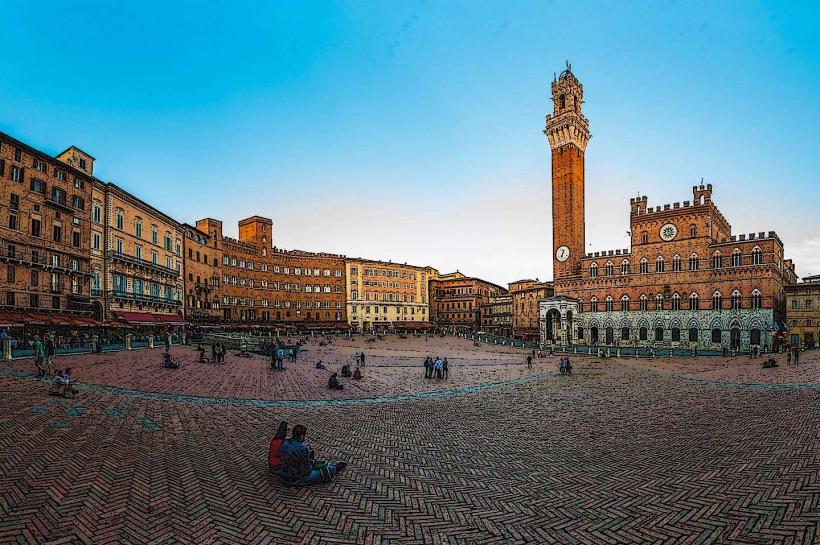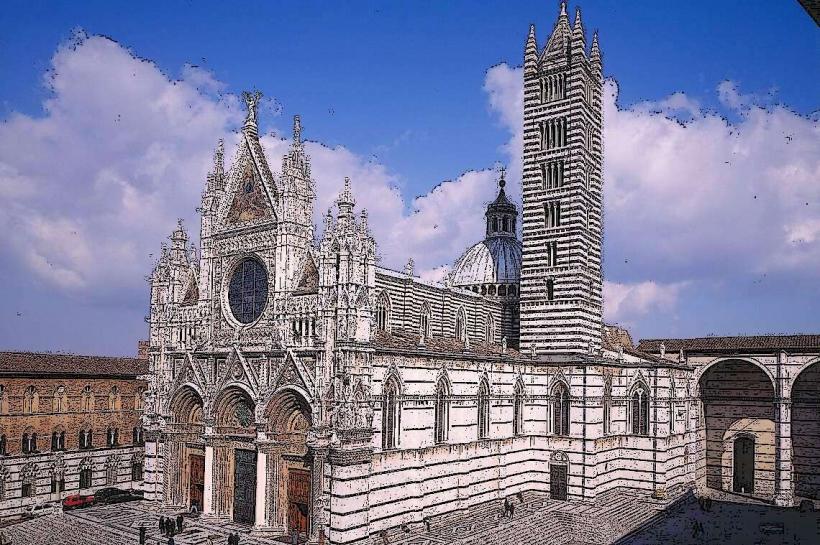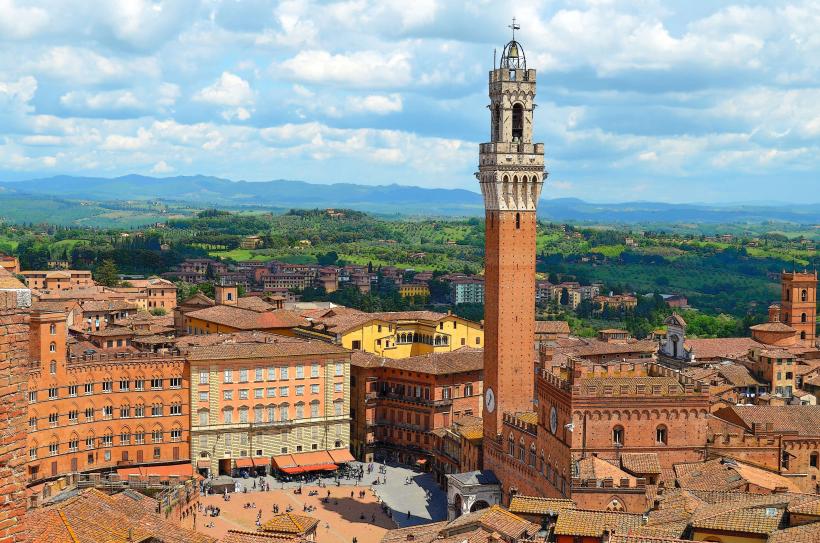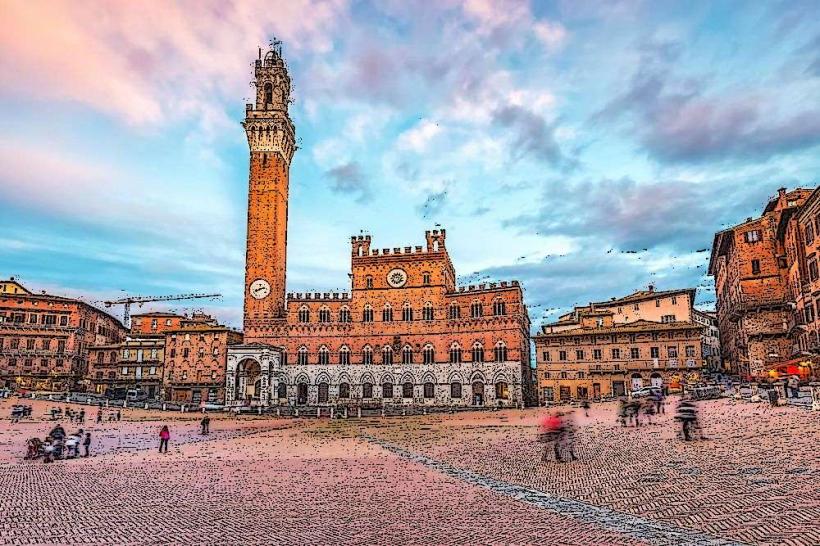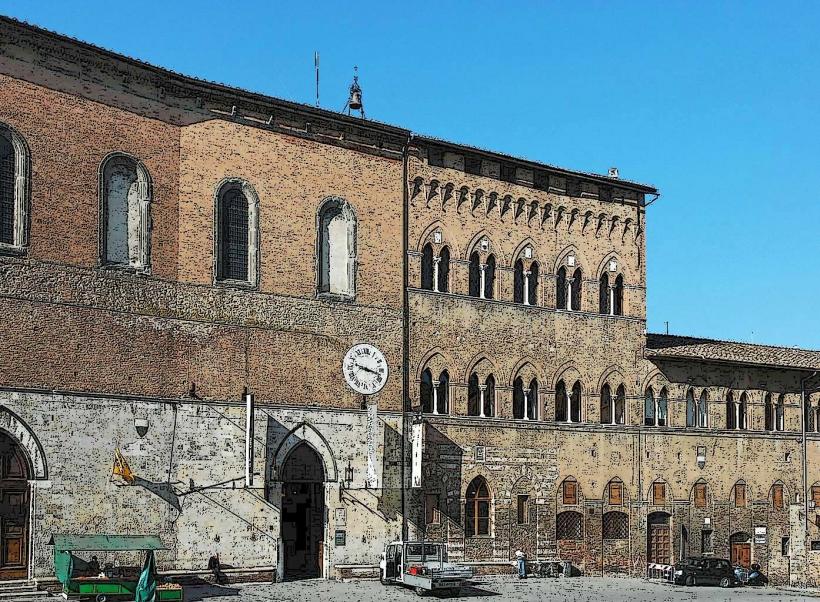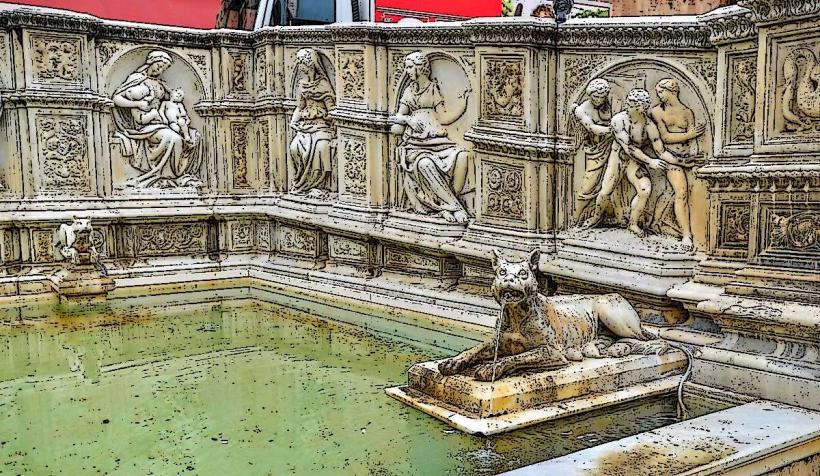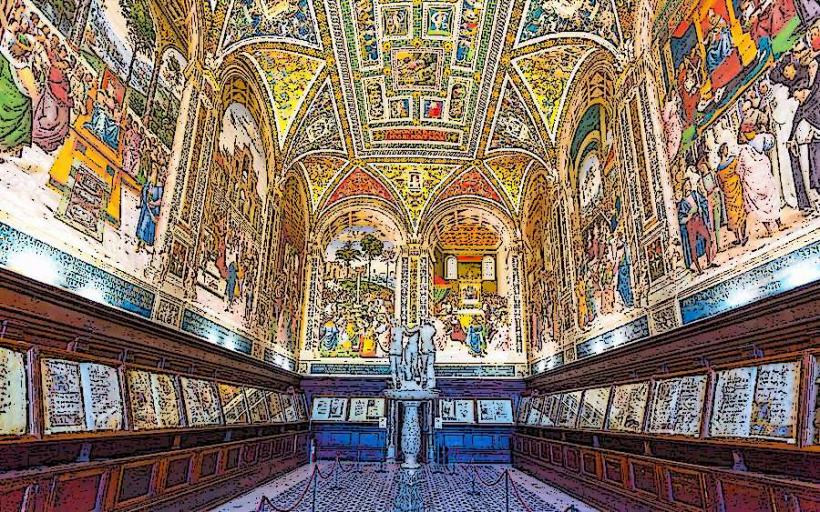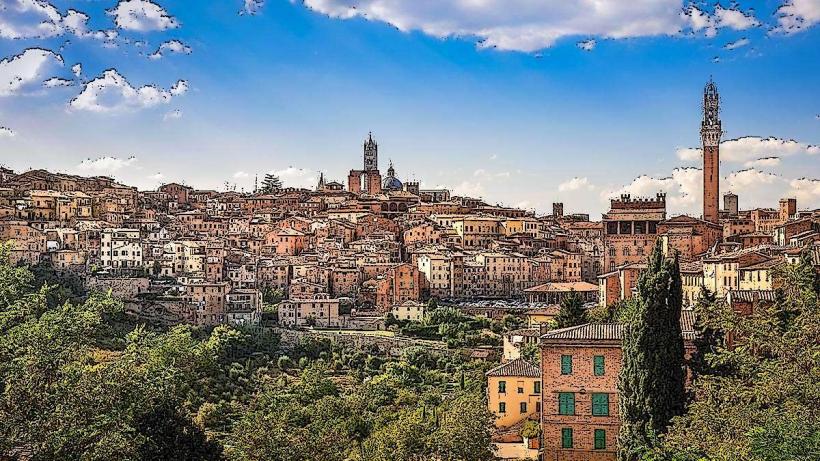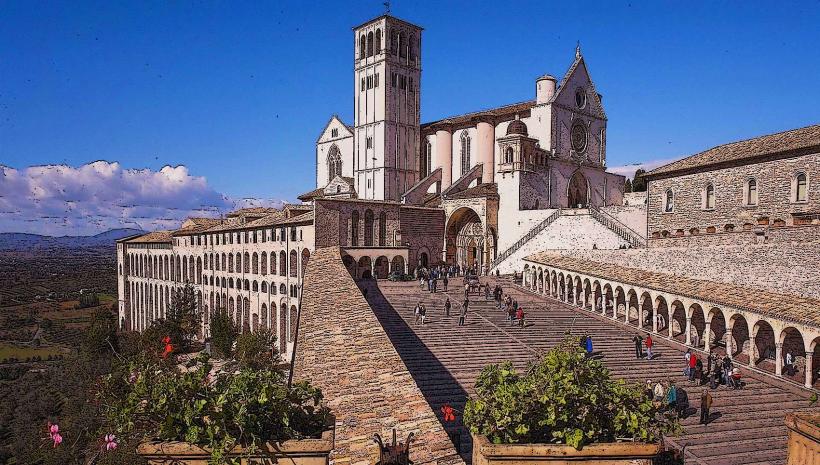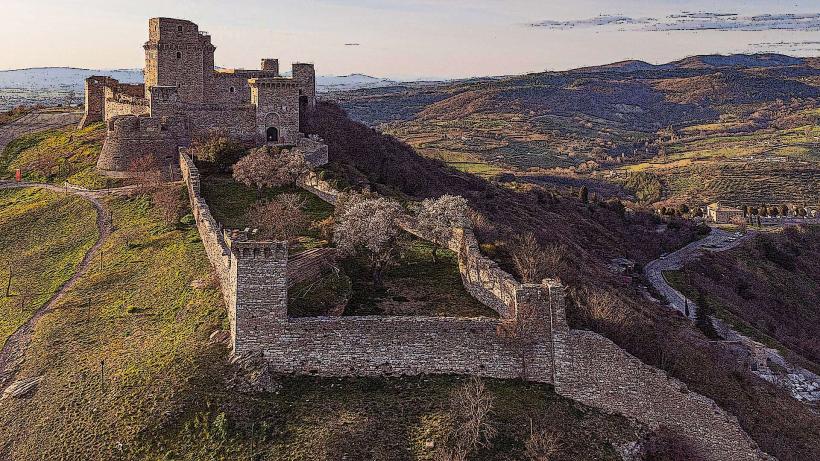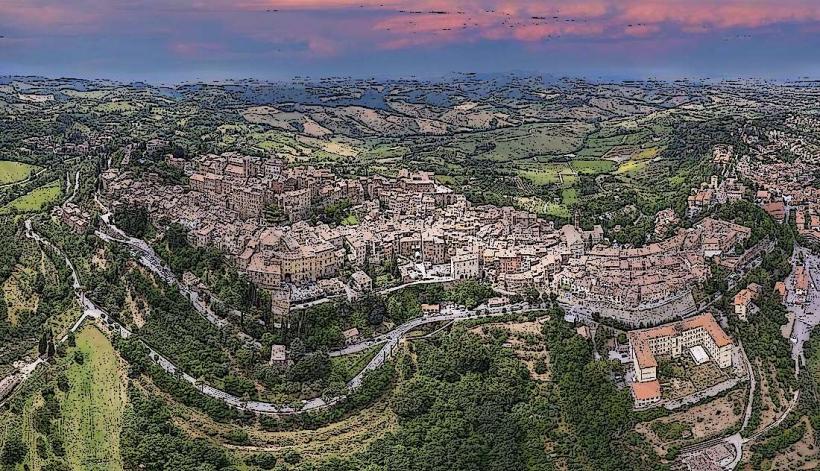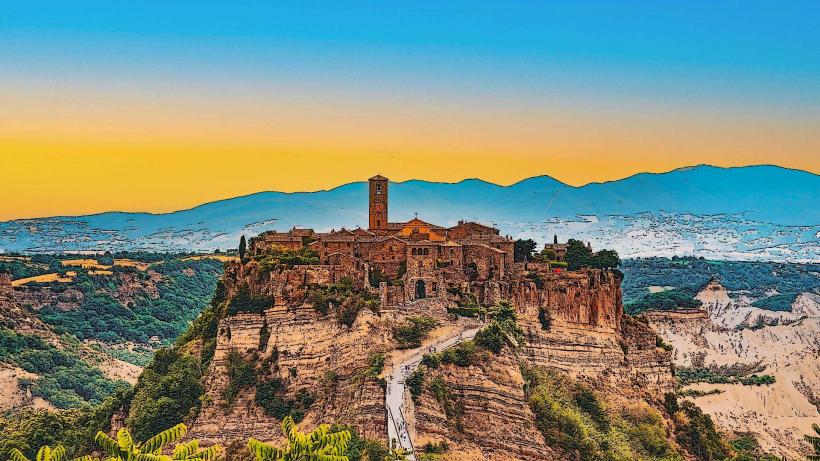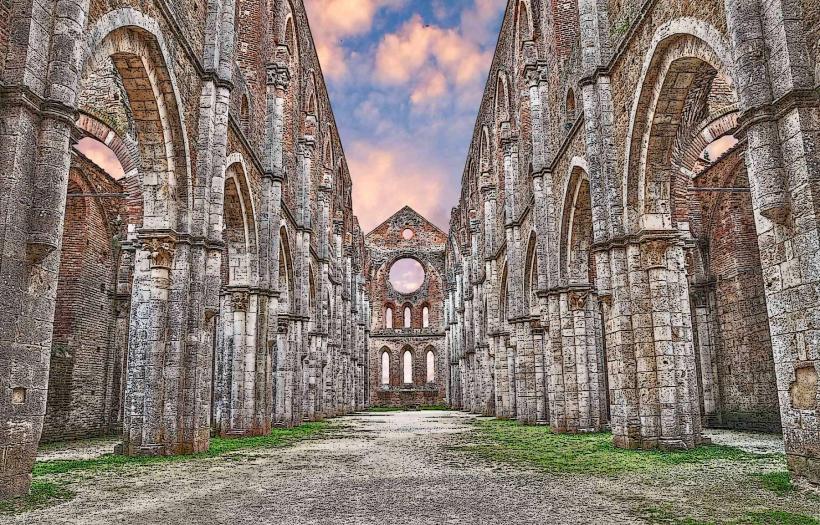Information
Landmark: Basilica of San DomenicoCity: Siena
Country: Italy
Continent: Europe
The Basilica of San Domenico (Basilica di San Domenico) is one of the most important churches in Siena, located just outside the historic city center. It is a striking example of Italian Gothic architecture and holds significant historical, religious, and artistic importance. The basilica is dedicated to Saint Dominic (San Domenico), the founder of the Dominican Order, and is a vital center of both religious and cultural life in Siena.
1. Historical Significance
The basilica was constructed in the late 13th century, starting in 1226, shortly after the death of Saint Dominic. It was built to honor his legacy and to provide a place of worship and devotion for the Dominican community, who had established a presence in Siena.
The church became the center for the Dominican Order in Siena, serving as a key location for preaching, teaching, and religious services. Over time, the basilica also became a place of pilgrimage, particularly for those devoted to Saint Catherine of Siena, one of Italy's most revered saints, who was a member of the Dominican Tertiary.
2. Architectural Design
The Gothic style of the basilica is evident in its long nave, pointed arches, and soaring columns. However, the building also incorporates elements of the Tuscan Romanesque style, making it a hybrid of different architectural traditions that were popular in Italy during the period.
The basilica has a simple, unadorned facade with a large rose window above the entrance. The exterior is rather austere compared to other churches in Siena, reflecting the Dominican ideals of humility and devotion. However, the interior is much more ornate and filled with artistic treasures.
The bell tower of the basilica is a striking feature, standing tall at the back of the church. It is built in a Romanesque-Gothic style and adds verticality to the building’s overall structure.
3. Interior and Artworks
Inside the Basilica of San Domenico, visitors are struck by its spaciousness and solemnity. The interior features high vaulted ceilings and long, narrow aisles that direct the worshiper’s attention to the altar at the far end of the church.
One of the most important and venerated relics housed within the basilica is the head of Saint Catherine of Siena, which is kept in a silver reliquary. Saint Catherine, who was born in Siena in 1347 and is one of the church’s most famous saints, was a mystic, theologian, and a key figure in the renewal of the Catholic Church during the late Middle Ages. Her connection to the basilica makes it a significant pilgrimage site for Catholics.
The church’s walls are adorned with frescoes that depict the lives of Saint Dominic and Saint Catherine. Among these is the fresco cycle by the Sienese artist Bartolomeo di Tommaso, illustrating scenes from the life of Saint Dominic. These frescoes can be found in the Chapel of Saint Catherine.
The basilica also contains altarpieces by several notable artists, including Antonio del Pollaiuolo and Giovanni di Paolo, further enhancing the artistic value of the space.
4. Chapel of Saint Catherine
The Chapel of Saint Catherine (Cappella di Santa Caterina) is one of the most important areas of the basilica. It houses several of Saint Catherine’s relics, including her head, as well as other items related to her life and spiritual legacy.
The chapel features works of art that depict scenes from her life and miracles. Visitors often come here to pay homage to the saint, particularly due to her deep connection to both Siena and the Dominican Order.
5. Religious Significance
The Basilica of San Domenico has long been a center for Dominican spirituality, serving not only as a place of worship but also as a base for the Dominican Friars who are dedicated to preaching and teaching. The Dominican community continues to have a presence at the basilica, maintaining its religious and cultural role in the city.
The basilica is also an important site for pilgrims who come to pray before the relics of Saint Catherine, whose influence continues to be felt in Siena and beyond.
6. Saint Catherine of Siena
Saint Catherine is one of the most revered saints in the Catholic Church, and her mystical experiences and spiritual writings have had a profound influence on Christian theology. She was canonized in 1461 and declared a Doctor of the Church in 1970, the first woman to receive this honor.
Saint Catherine's connection to the basilica and her relics housed here make the church a significant pilgrimage destination. It is also a symbol of Siena’s deep religious heritage, and her life and works are celebrated in both the church and the wider community.
7. Visitors’ Experience
Today, the Basilica of San Domenico is a popular tourist attraction in Siena, drawing visitors for its spiritual significance, its artistic treasures, and its stunning architecture. Many come specifically to see the relics of Saint Catherine and to explore the basilica's rich artistic history.
The basilica is also a venue for religious ceremonies, including Mass, special feast days in honor of Saint Dominic and Saint Catherine, and other important events in the Dominican calendar.
8. Cultural Context
- The Basilica of San Domenico is part of Siena's UNESCO World Heritage Site, contributing to the city’s reputation as a center of religious art and culture. Its role in Siena’s history, particularly its connection to Saint Catherine, places it among the most significant religious landmarks in Tuscany.
Conclusion
The Basilica of San Domenico is an architectural and spiritual gem in Siena, with deep historical connections to the Dominican Order and Saint Catherine of Siena. Its striking Gothic and Romanesque design, coupled with its religious significance and artistic treasures, make it one of the city’s most important religious sites. Whether for pilgrims, art lovers, or tourists, the basilica offers a moving and enriching experience that connects visitors with Siena’s rich religious and cultural heritage.

